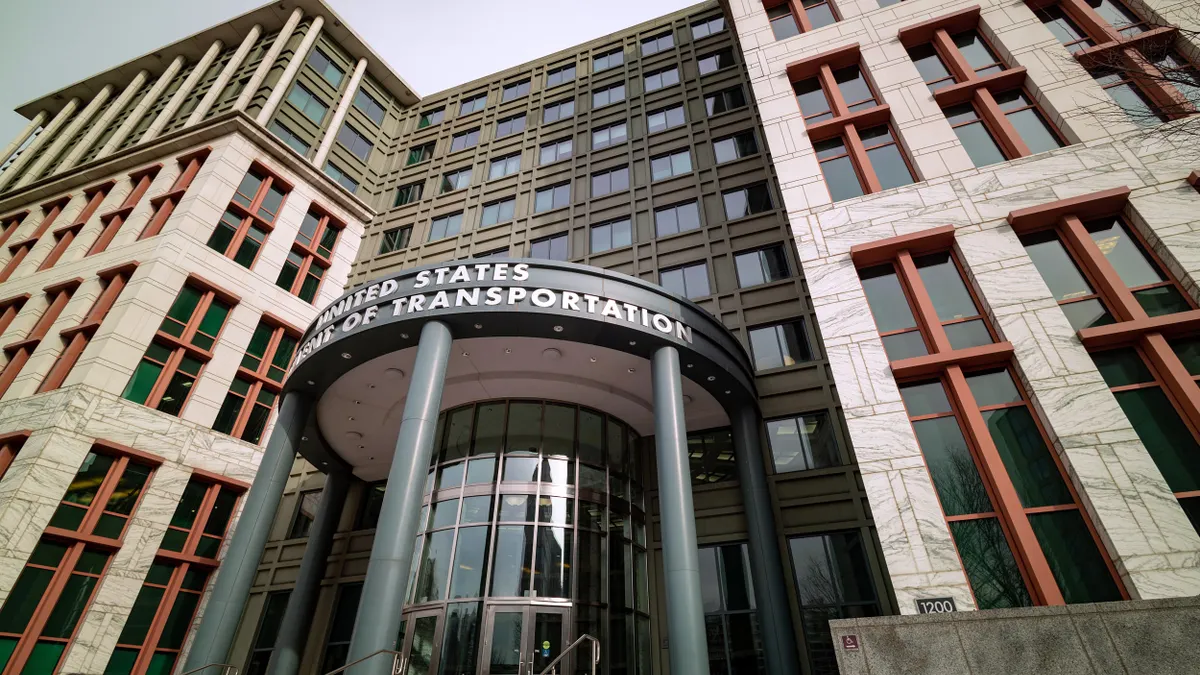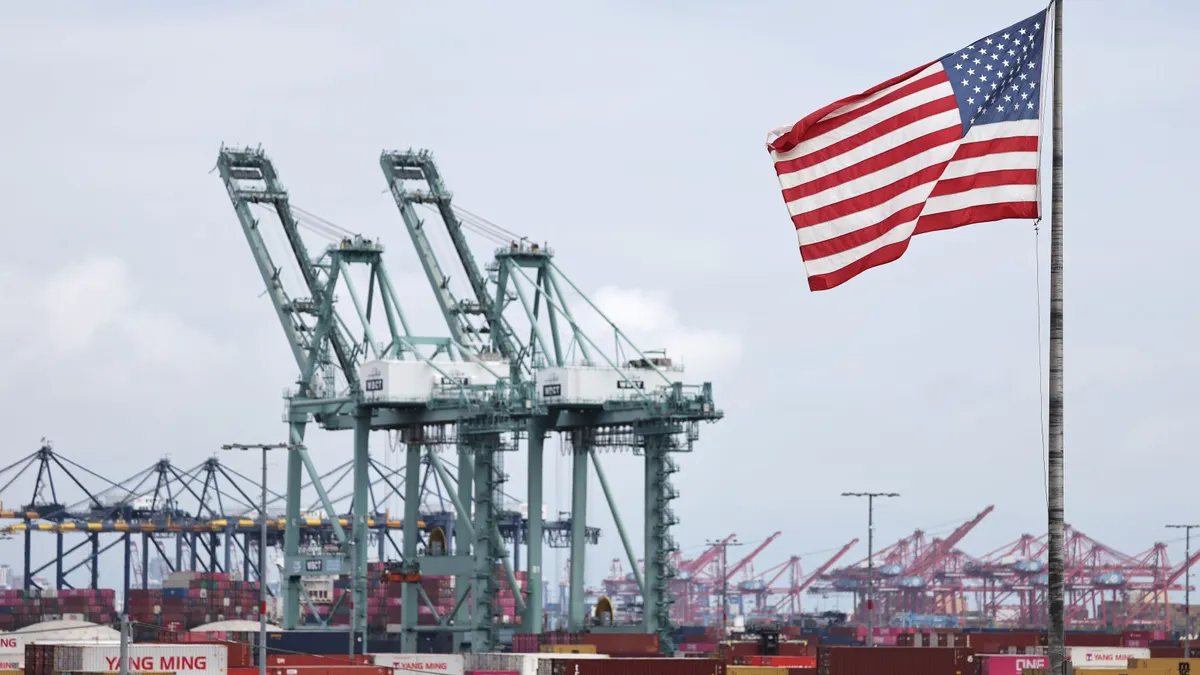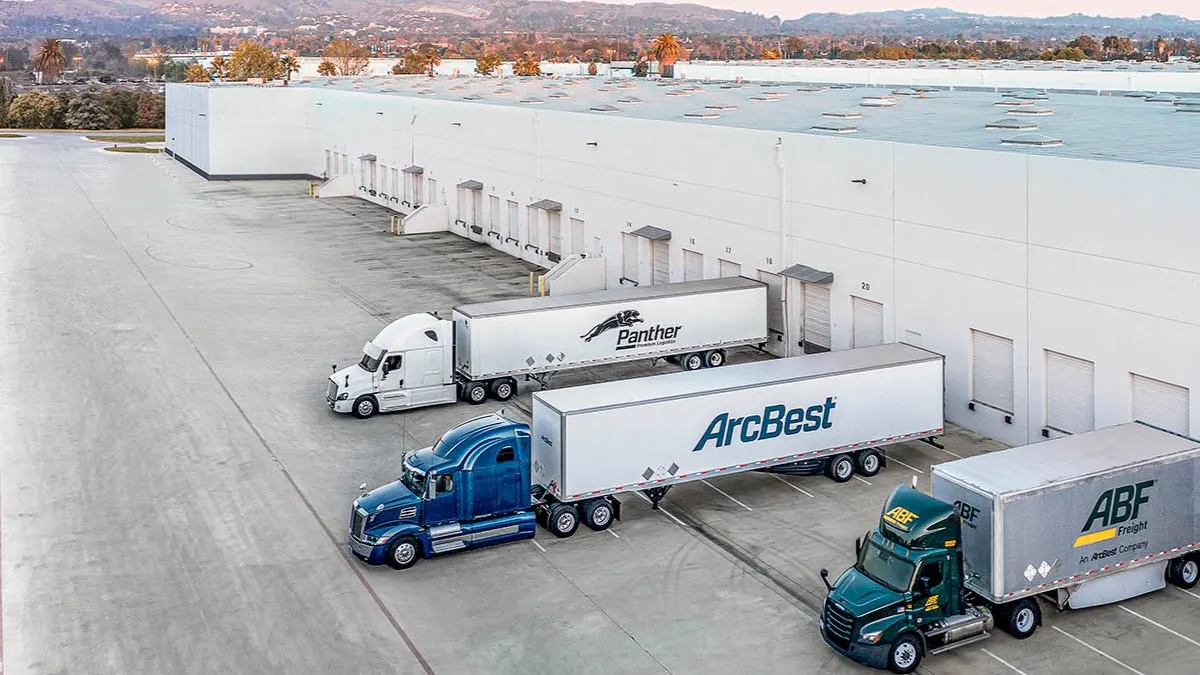The LTL sector is so souped up by e-commerce and consumers' in-home demands that Old Dominion Freight Line is feeling the pressure on its service-center doors.
It's a literal pressure, and not necessarily a bad kind. Old Dominion uses a "door pressure report" to examine how often the loading-bay doors are used daily and how much freight is being pushed through a service center, said Dave Bates, Old Dominion senior vice president of operations.
Too much activity and door pressure, measured by higher numbers per door, can gum up the works. And Bates said throwing manpower at it doesn't help, because then workers and forklifts bump into each other.
When Old Dominion sees the door pressure start to increase, it knows it's time to add capacity. Old Dominion officials said door pressure is the main metric they use to assess need for expanded or new service centers.
"You have to have a fluid dock operation," said Bates, comparing too-busy service centers to a Black Friday at an overwhelmed Walmart. "You start pushing more than you can handle, and you start losing your efficiencies."
Those inefficiencies can also mean line-haul drivers stuck at docks and delayed deliveries from the centers to the receivers.
To avoid too many loads coming through the doors of an overworked service center, Old Dominion announced nine new centers would open. The centers are in Brooklyn, New York; Edinburgh, Indiana; Grand Island, Nebraska; Louisville, Kentucky; Mansfield, Ohio; McDonough, Georgia; Mesa, Arizona; Milton, Pennsylvania; and Olympia, Washington.
The company currently has 246 centers, including the nine, which are operational. That is up from 117 centers in 2002. But as Old Dominion grows, while maintaining the best LTL operating ratio in the business, challenges remain.
One is obtaining the land on which to put a new service center. Another is getting government approvals for zoning, a lengthy process. And on the business side, Old Dominion sees a growing landscape populated by more e-commerce users, demanding more freight, quicker and faster customer service, and speedy deliveries.
Old Dominion adds 9 service centers
Land, my father said
As Old Dominion plans to add more service centers, it is having a problem with land availability. The land for a service center has to be fairly close to populations that Old Dominion and its clients serve.
The pricier land means higher costs. Old Dominion has a $245 million capital expenditure budget for real estate in 2021. It includes purchasing property, constructing, renovating, or additions to the service center network.
Each service center can vary in size, depending on the market. Old Dominion builds each facility custom to the market needs and with future growth in mind. They range from 15,000 square feet to more than 300,000 square feet.
But the best measurement in the industry is not square feet, but the number of doors, according to Old Dominion. Each of the nine new facilities ranges from 30 doors to 105 doors.
"We try to buy the land and acreage with future expansion in mind, so, often, our lots are anywhere from 10 to 20 acres," Bates said.
Buying that land and getting it approved is a task. And other strategies, such as buying leased facilities, can be cost-prohibitive. Old Dominion asked a New Jersey landlord if he would sell a building. The landlord wanted $80 million for the New Jersey facility. Old Dominion passed, Bates said.
Sometimes land can be found, but then another problem arises: Trucking is considered heavy industry by many jurisdictions. Therefore, many properties that Old Dominion looks at have to be rezoned. Planning the building brings out the municipal forces, too.
It's an issue CEO Greg Gantt talked to Transport Dive about in December. In the past, Gantt said, Old Dominion has been able to pick up leftover real estate that other carriers sold. But that strategy is fading, as there are only so many such buildings left.
"As time goes on, all of a sudden, they're gone," said Gantt.
"Trucking is not something everybody wants in their towns."

Dave Bates
Senior Vice President of Operations at Old Dominion
States with more land and fewer regulations tend to welcome Old Dominion and let fly open the doors to new development, Bates said.
"If we were to want a big service center in West Virginia, they would take us with open arms," said Bates. "When we get into New York, New Jersey, California — it's much harder."
Old Dominion wants to operate everywhere. But company officials said it finds challenges in highly populated areas like New York, New Jersey and California, because real estate goes at more of a premium. And in those states, near the population centers, it can be difficult to find a facility that fits its needs.
Most municipalities try to accommodate businesses with parcels zoned solely for business. Old Dominion has even gotten pushback from some industrial centers, because light-industrial companies don't want to be near service centers.
"Trucking is not sexy," said Bates. "Trucking is not something everybody wants in their towns." (Unless, he notes, their shipments are late.)
The land question has Old Dominion "turning over every stone" in the quest for locations. In the Indianapolis region, for example, that meant expanding on both ends, but outside of the Hoosier capital's borders. Old Dominion put its service centers in Lafayette, Indiana, which is north of the city along Interstate 65. And it put the other center in Edinburgh, Indiana, which is located south of the city along I-65.

E-commerce creates the pressure
Bates said e-commerce is part of the demand creating the need for more service centers.
As people stay home, even as they work, inventories have to be closer to where the population lives, and consumers are picking the shelves clean at a faster rate.
Retailers and warehouses, once content for a week's worth of demand, now want two to three weeks of product, said Peter Stefanovich, managing partner of Left Lane Associates.
Old Dominion's expansion of service centers helps the company speed up the time frame of deliveries, he said.
"It's having a network that allows you to get to the end user sooner," said Stefanovich.
Stefanovich said the "Amazonification" of the economy and consumer needs have created more pressing needs for efficient and quick deliveries.
"Our psyche has changed so that we expect things sooner," said Stefanovich.
A commitment to service
As freight demand increases, so do costs. On Monday, Old Dominion announced a general rate increase of 4.9%, effective March 1.
"To satisfy our customers' expectations and deliver on the promises we have made, we must continue to enhance our high-quality service network and systems," Todd Polen, Old Dominion's vice president of pricing services, said in reference to the rate increase, adding that part of the GRI would offset rising real estate costs.
Despite the expansion challenges, analysts seemed confident about Old Dominion. David Ross, Stifel managing director of global transportation and logistics, wrote in his Feb. 4 report that Old Dominion is once again the LTL leader in operating ratio.
"As the sun will rise each day, we believe it's now safe to say that Old Dominion will report the best margins in the LTL industry, every quarter," Ross and staff wrote in the report.
Old Dominion's operating ratio improves
Stifel noted that Old Dominion didn't always have such a stellar ratio, or as many service centers as it has in 2021.
"When we began covering the stock, the company's operating ratio was 91.9% in [Q3 2002], vs 76.3% [in Q4 2020], and they had a much smaller geographic footprint (117 service centers in 2002 vs. 245 today, and growing)," Ross wrote.
The efficiency gains have confounded investors, in a good way, Ross said.
"The [No. 1] question we get from investors on Old Dominion is some variation of 'Why is their margin so much higher than the peers?' ... or 'What's the secret sauce?' or 'How do they do it?'" Ross wrote.
Gantt answered that question in December, when he shared one lesson the LTL fleet learned in the Great Recession of 2007-2009:
"We have been extremely consistent even going back to the recession of 2009," Gantt said. "We did not cut service."
"As the sun will rise each day, we believe it's now safe to say that Old Dominion will report the best margins in the LTL industry, every quarter."

David Ross
Managing Director of Global Transportation and Logistics at Stifel
When the pandemic hit, a temptation to cut price and service was there, though. Its LTL competitors cut prices, and customers took note.
"We did lose some business early on because of price," said Gantt. "All of a sudden, everyone had extra capacity."
But the customers noticed some non-price factors were missing, Gantt said — factors such as on-time delivery, quality of customer service, care of the shipment. Old Dominion said its on-time LTL service is 99%, and has been for several years.
Eventually, the customers that left came back.
Bates said the service-center plan means keeping the service high-quality and not letting deliveries sit for long in the centers.
"In a perfect world, we pick it up today and it moves out tonight," said Bates. "We want to deliver it the day it arrives, or the next day."

















